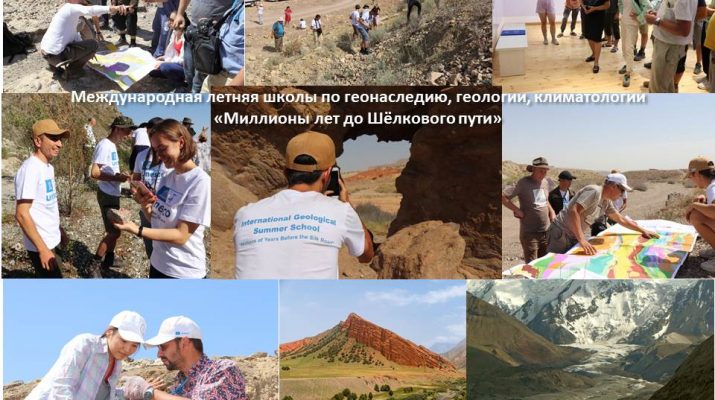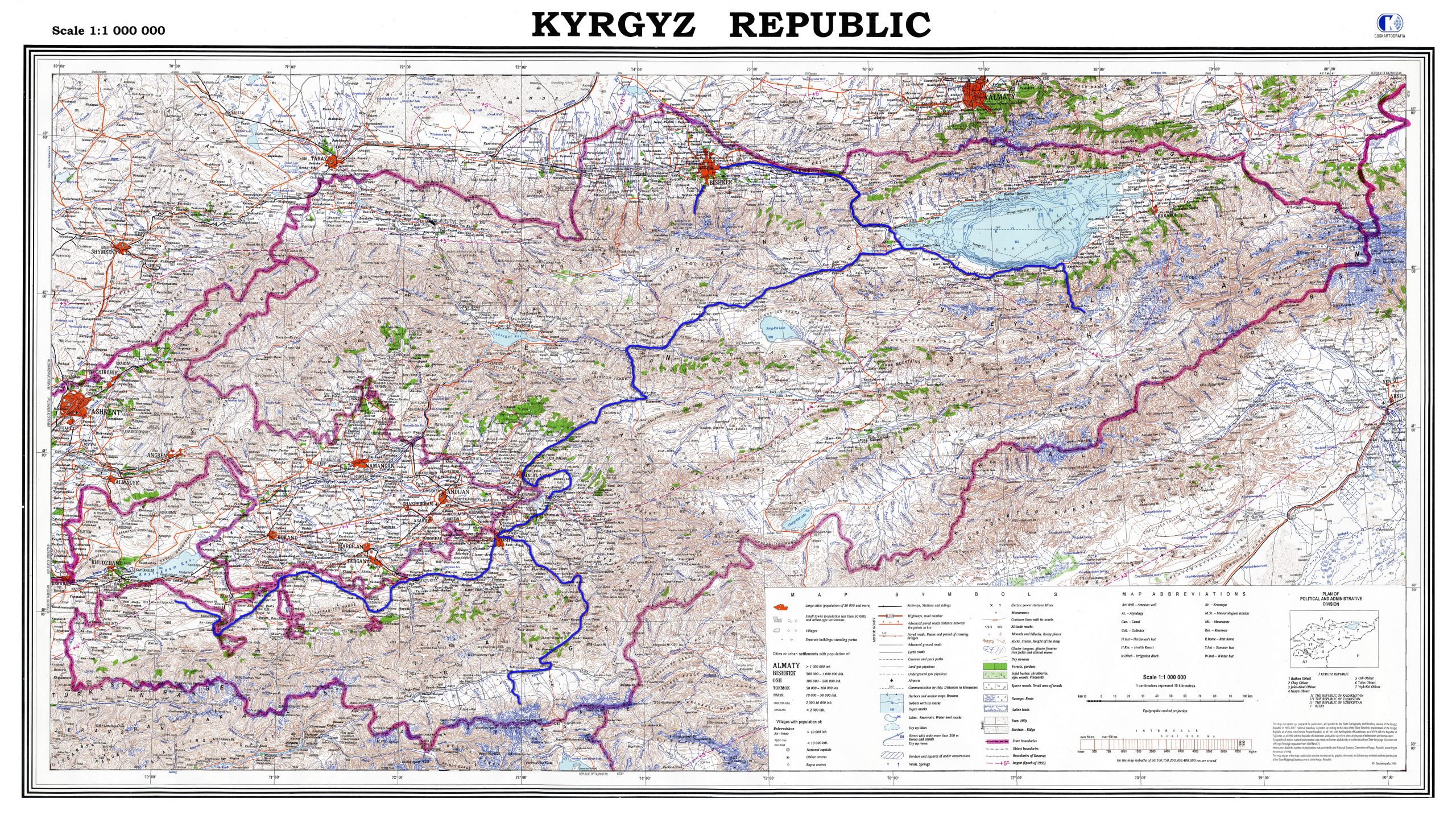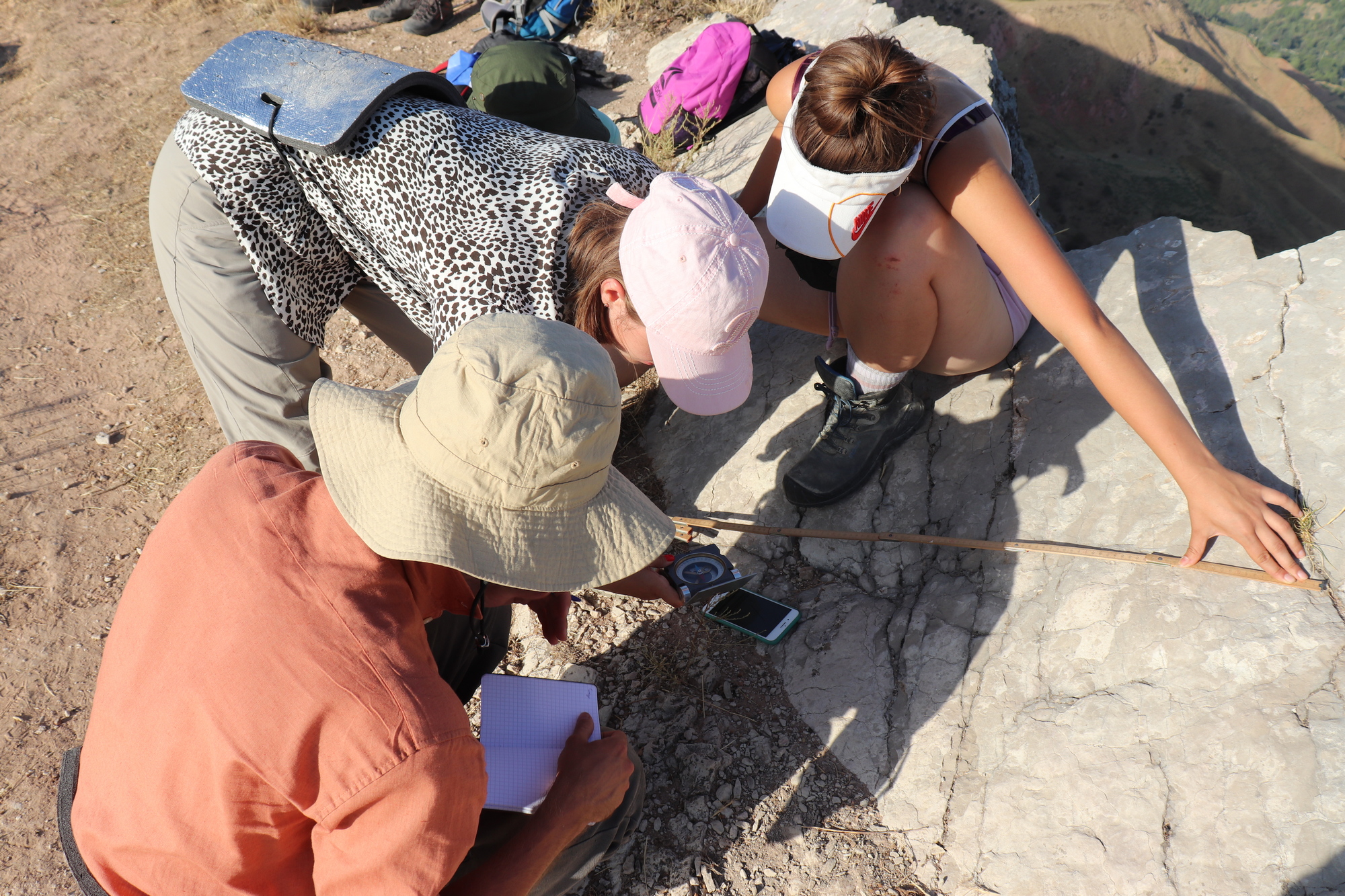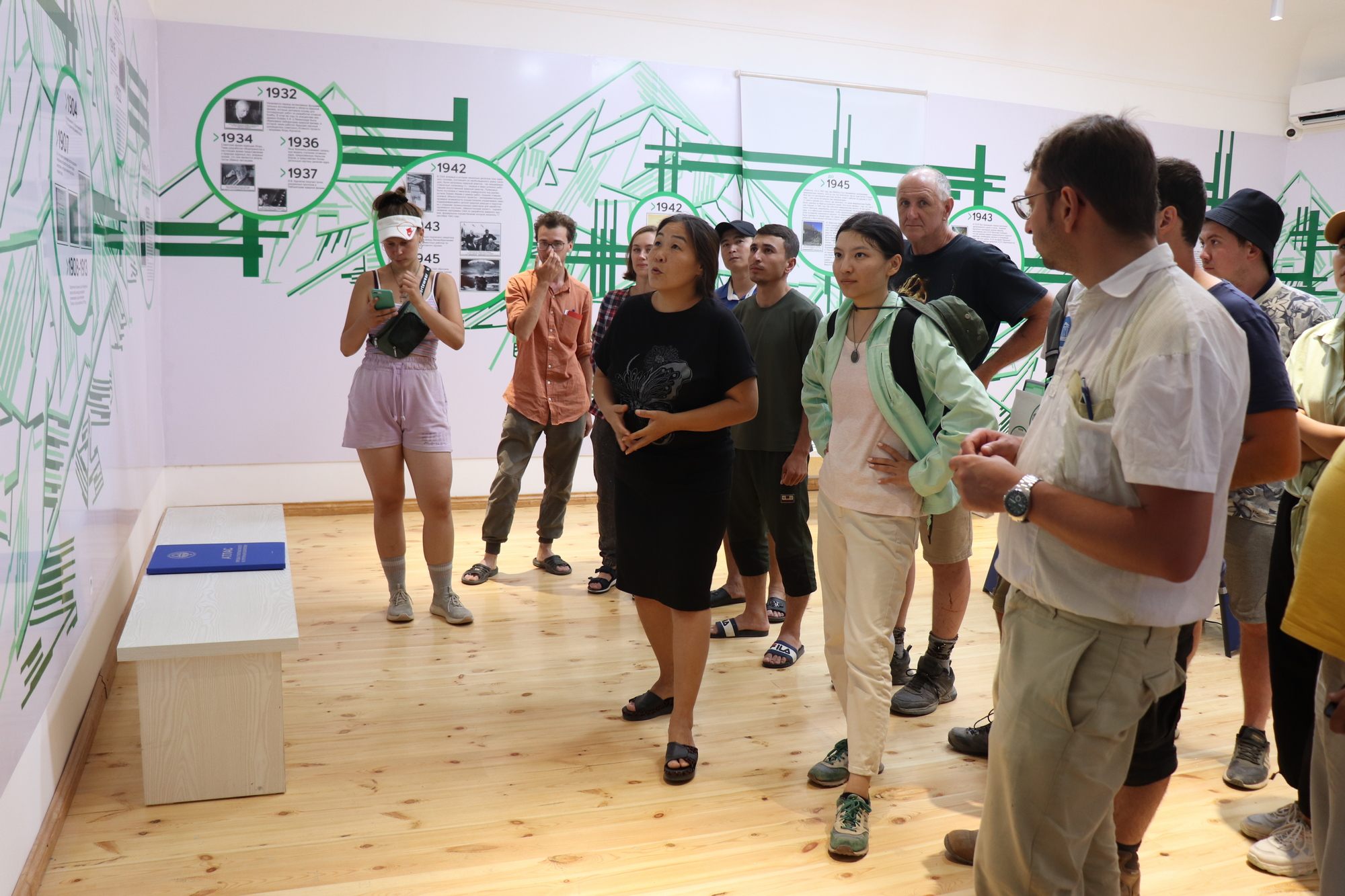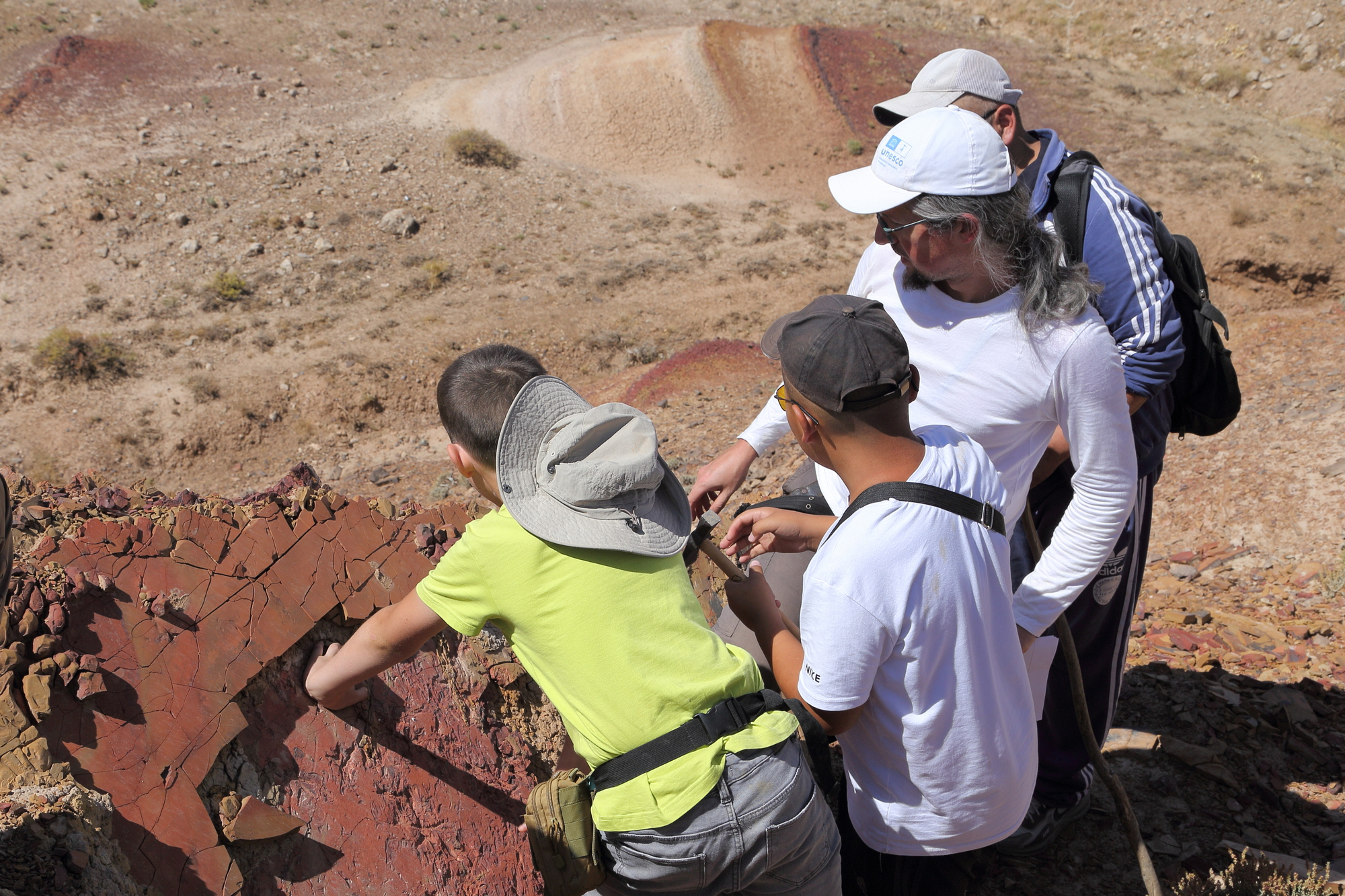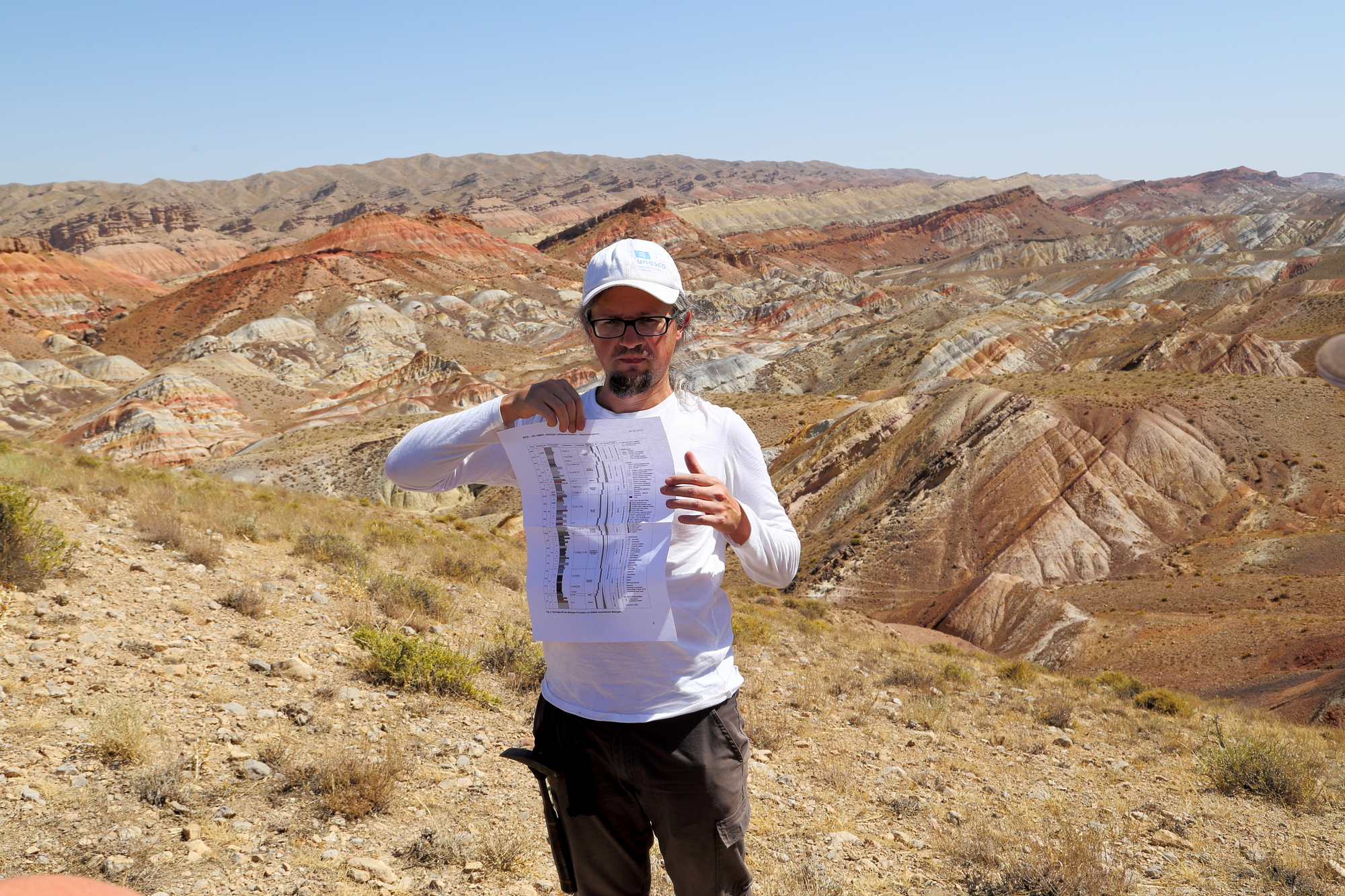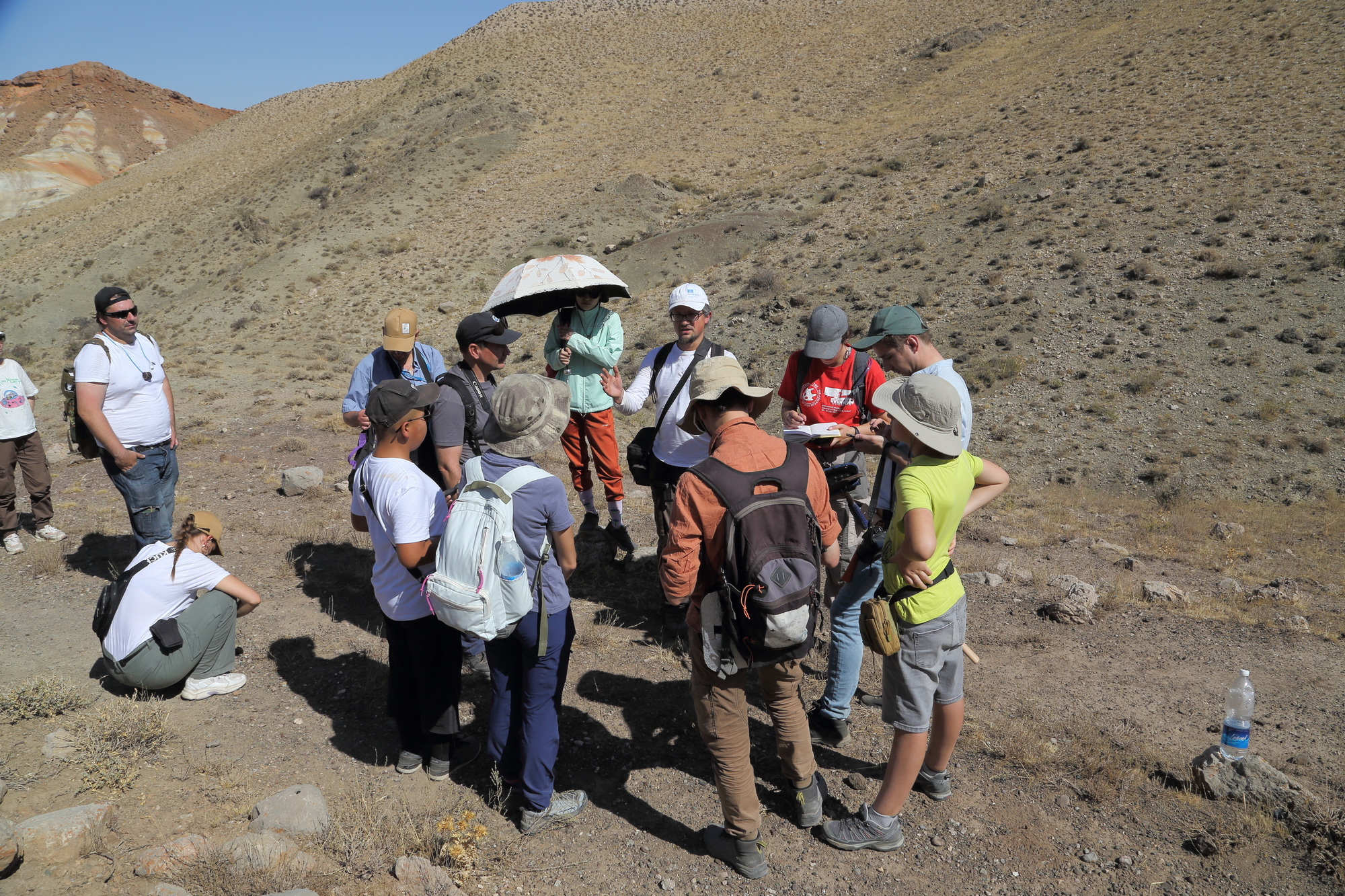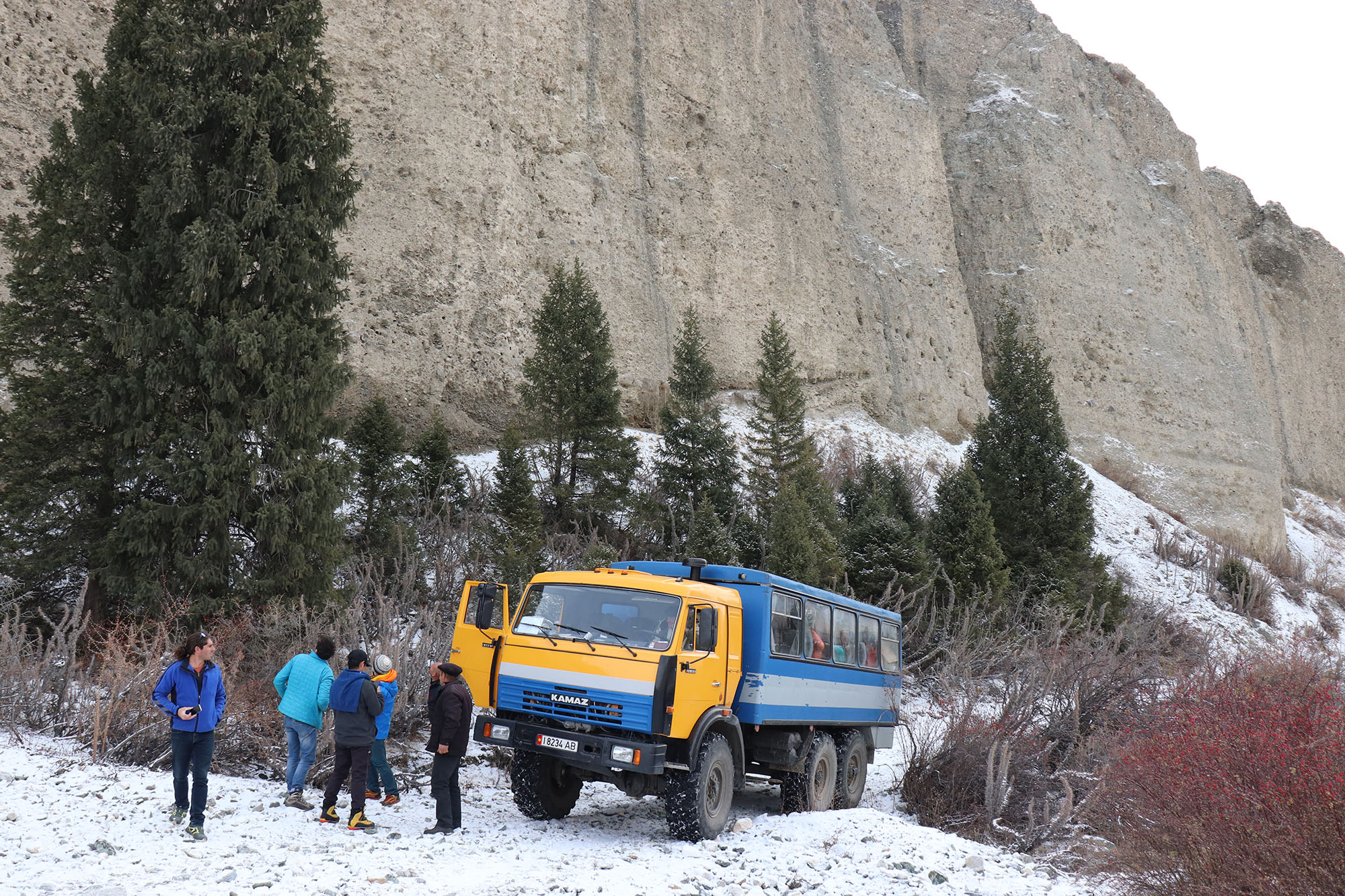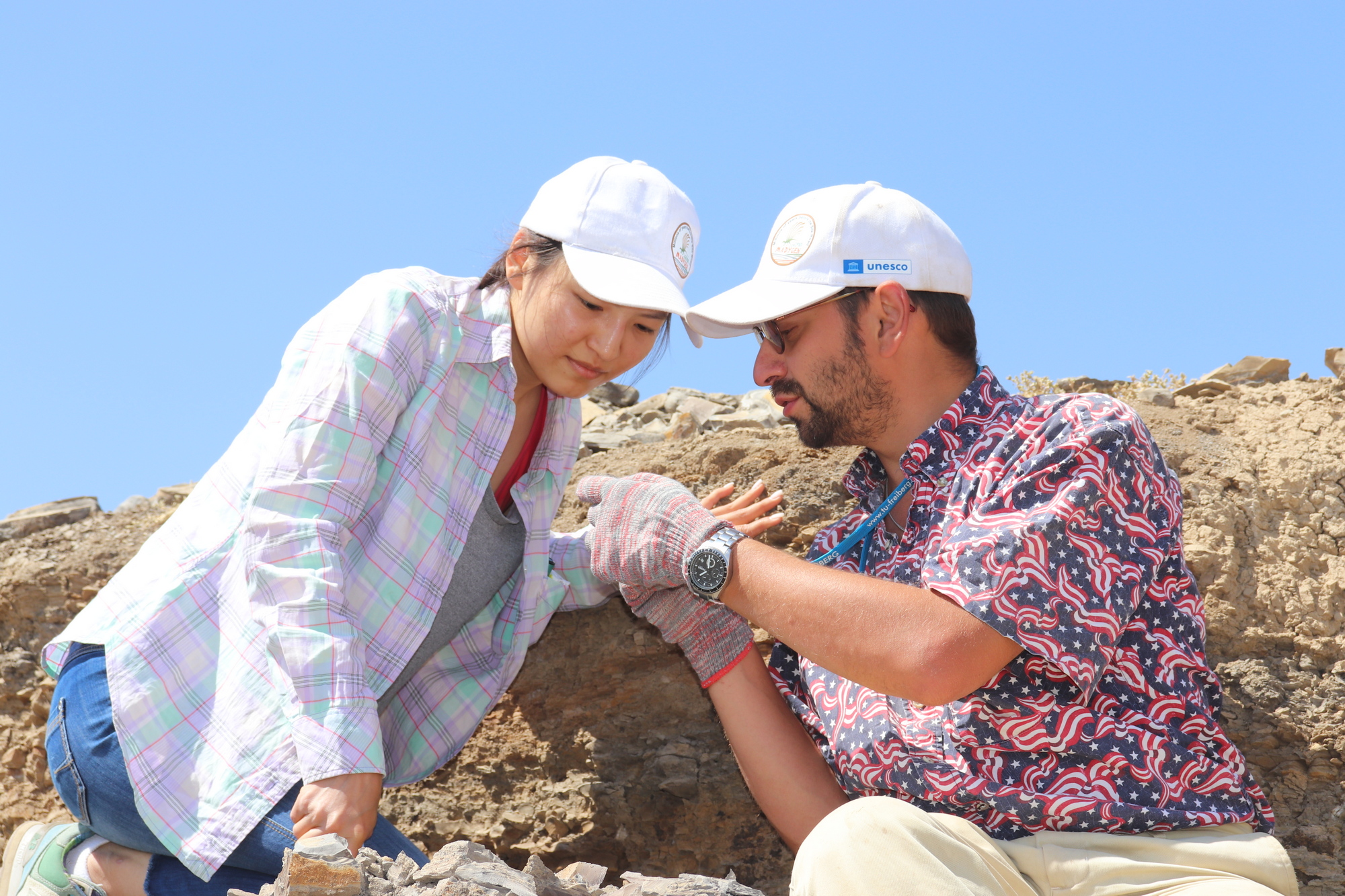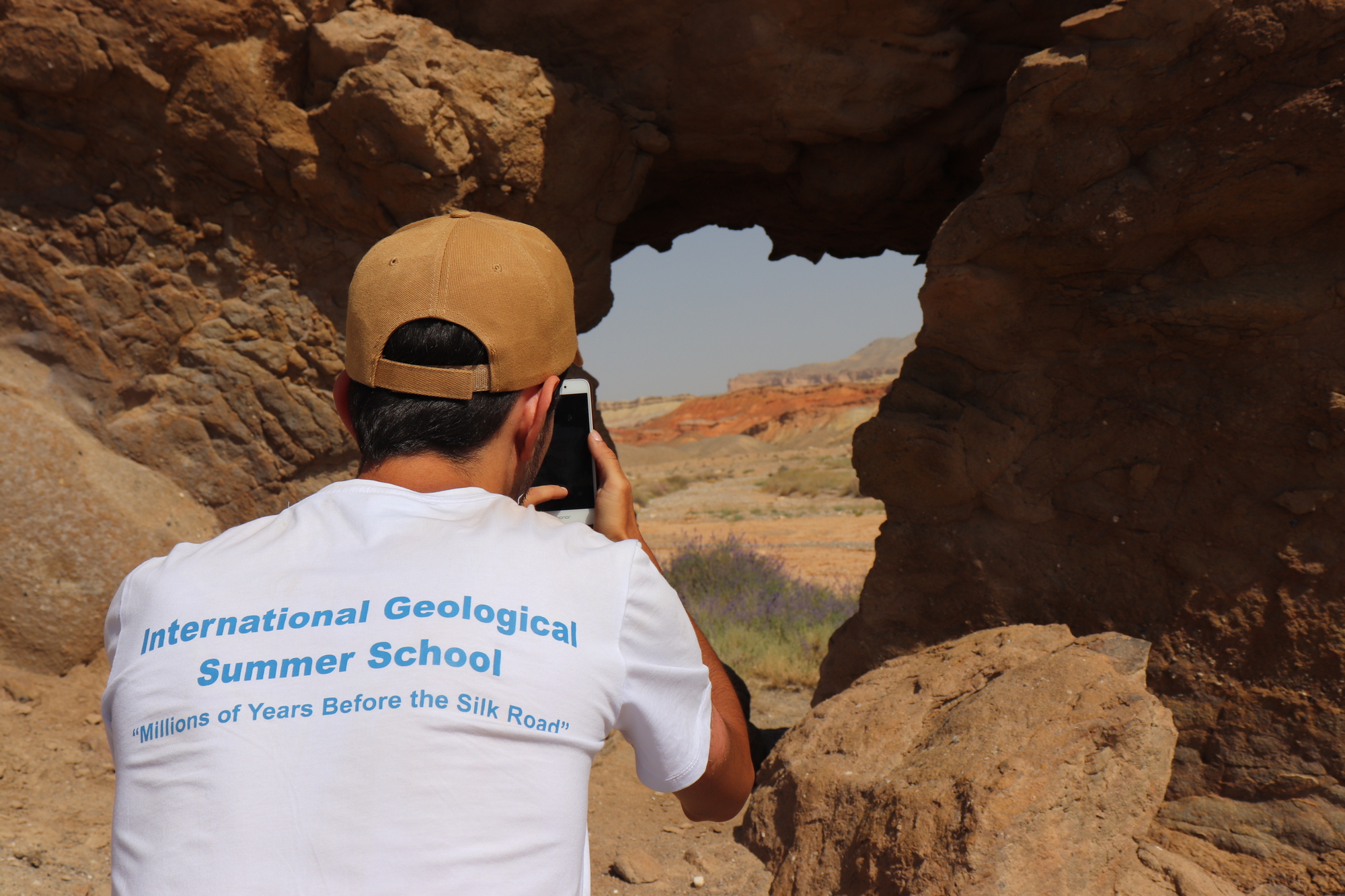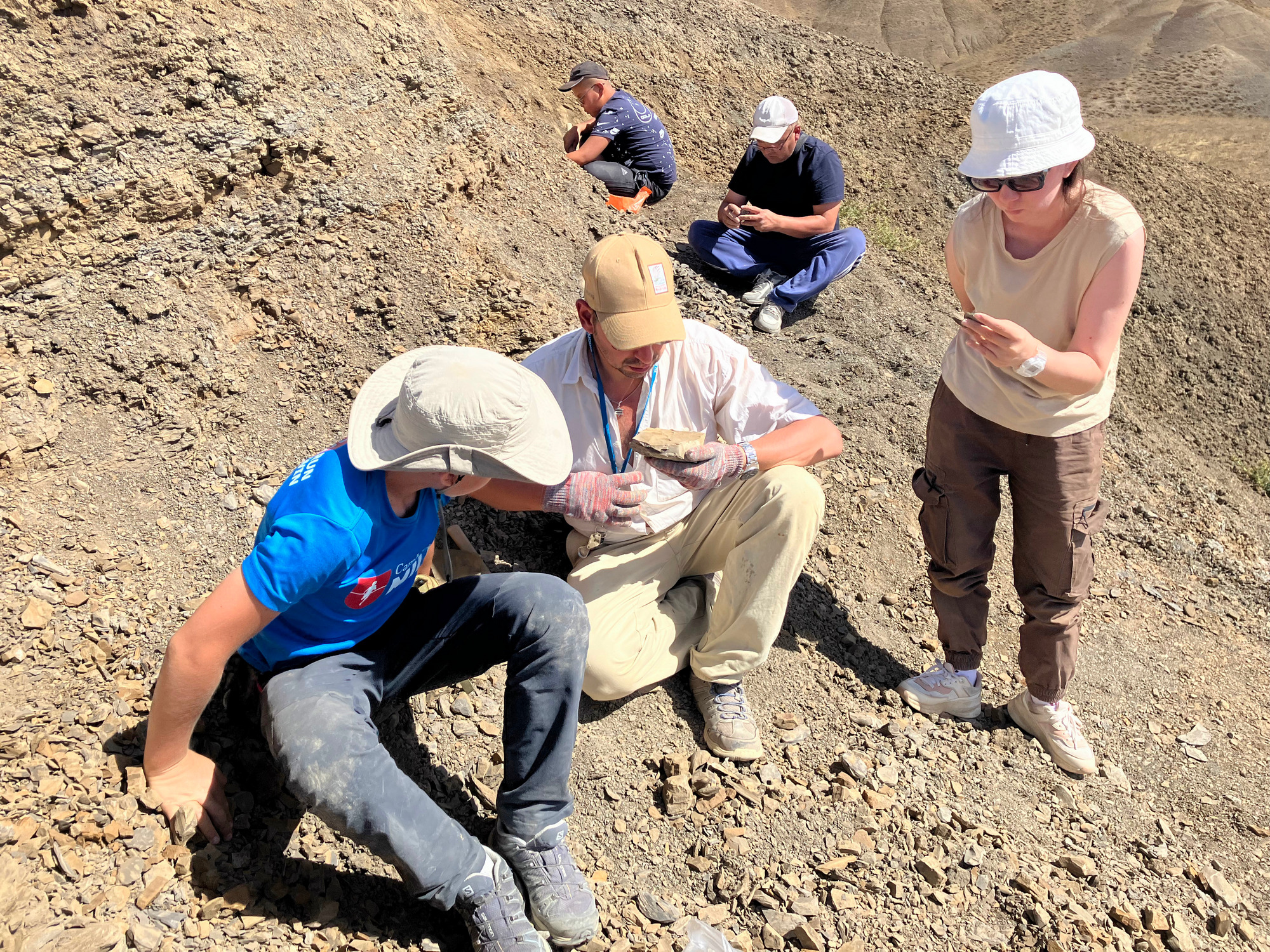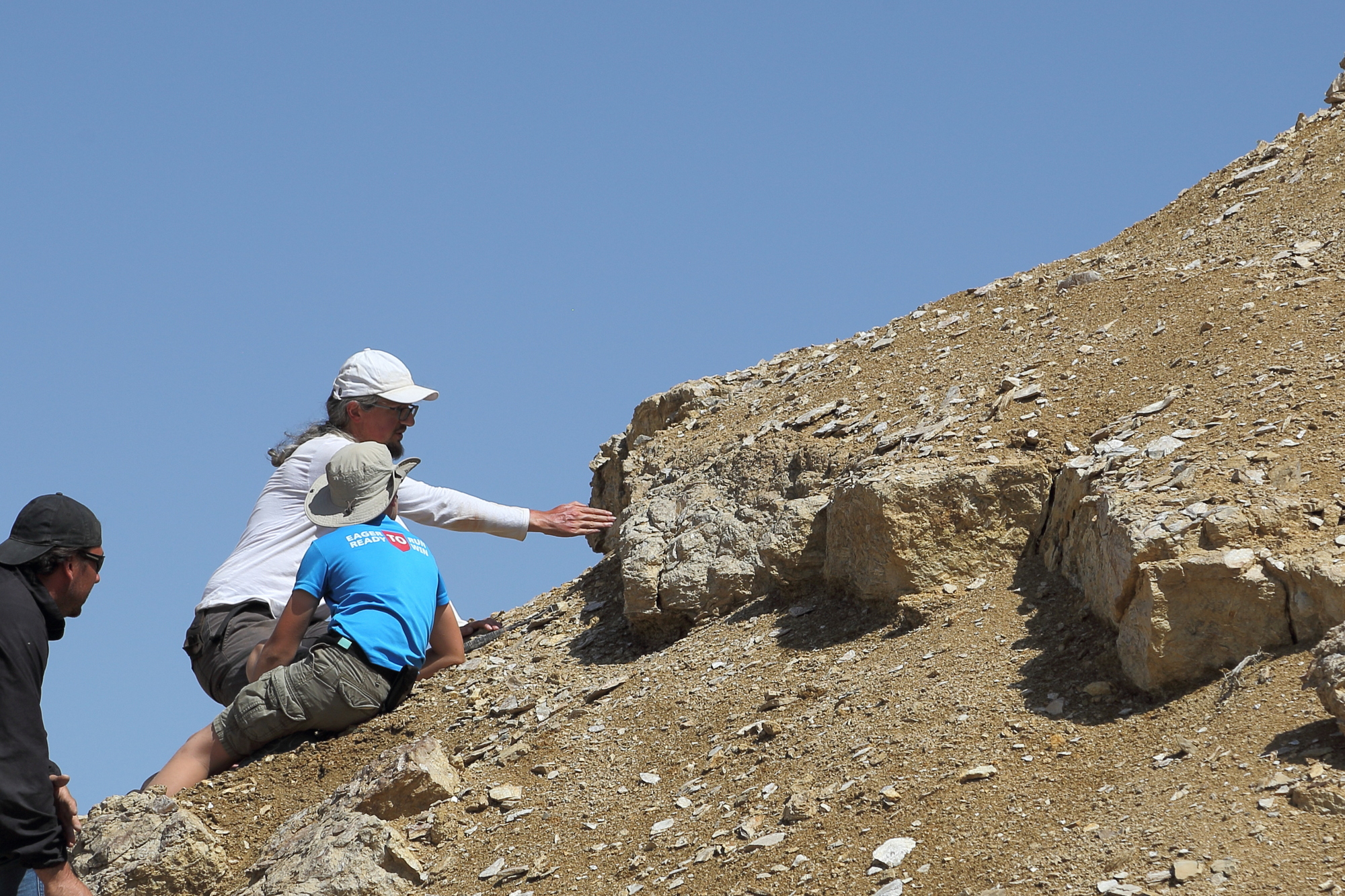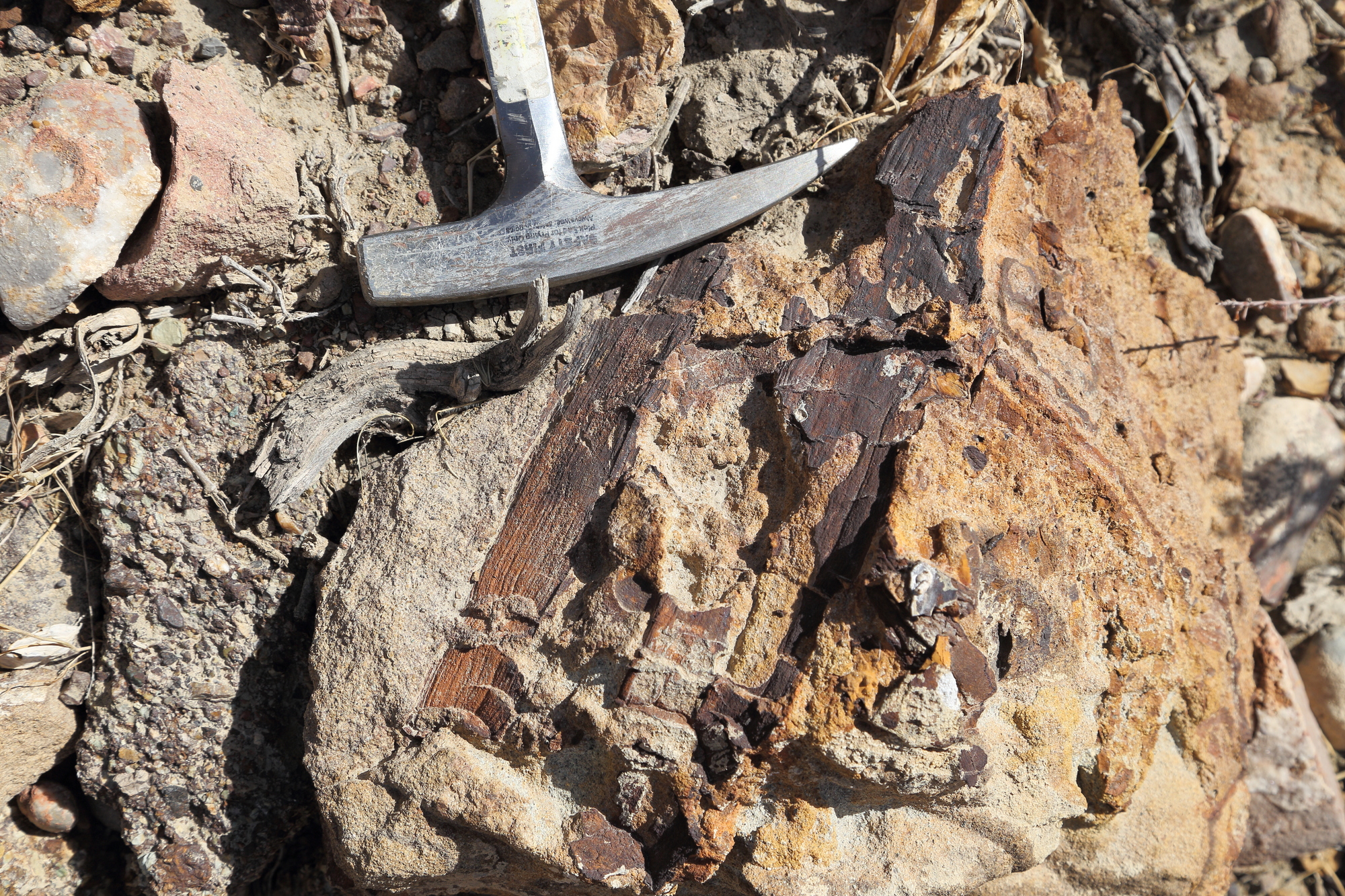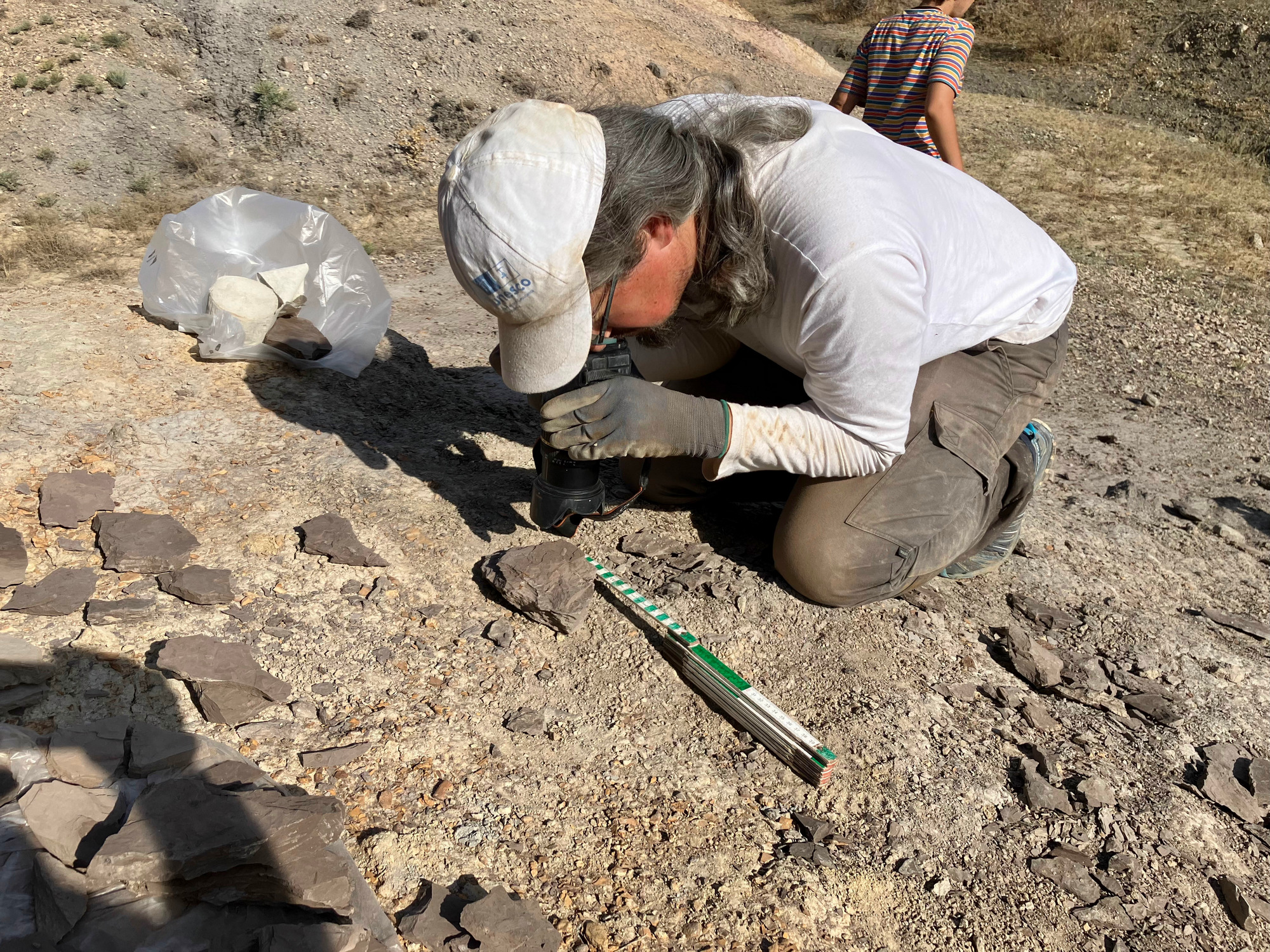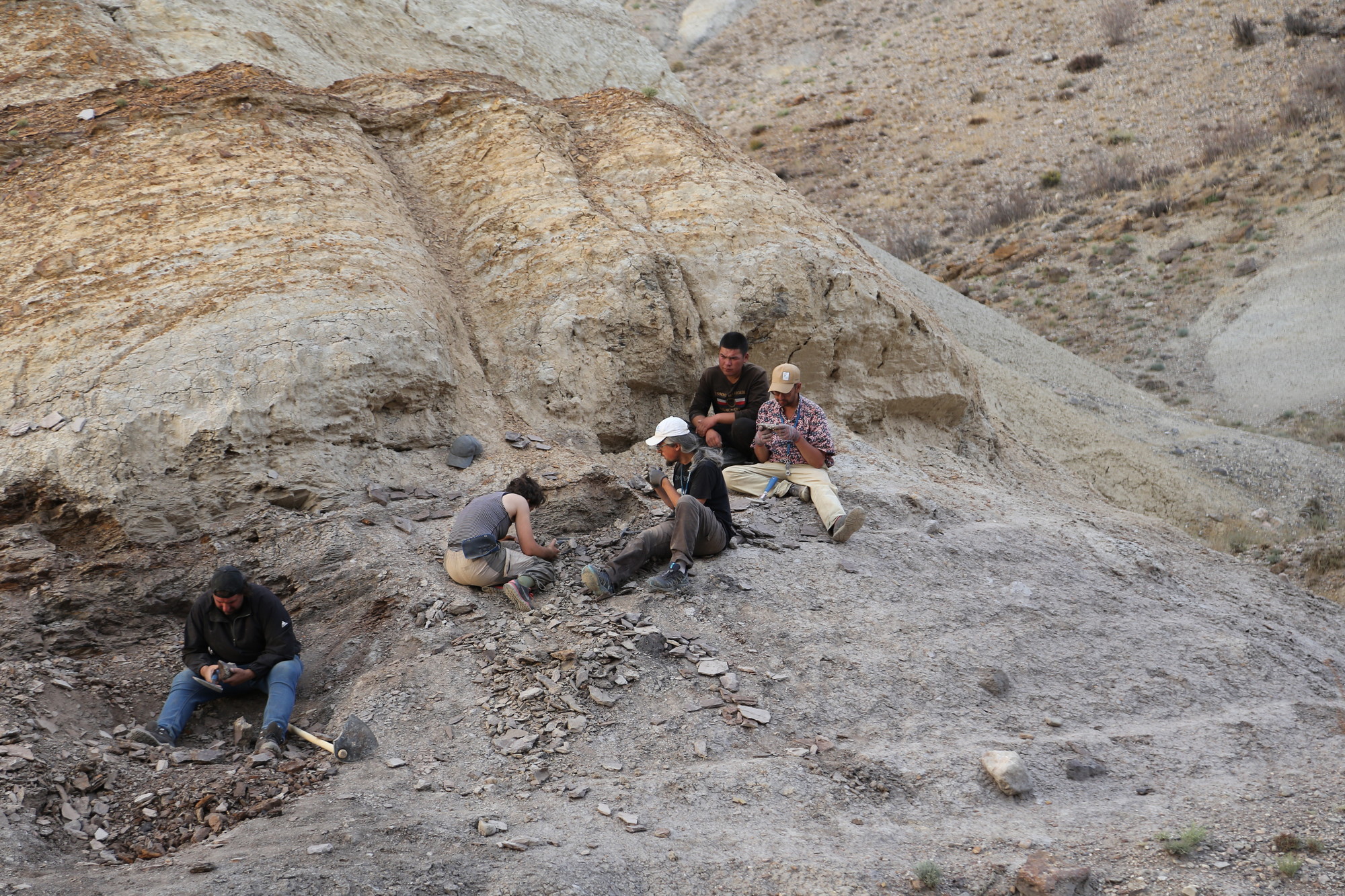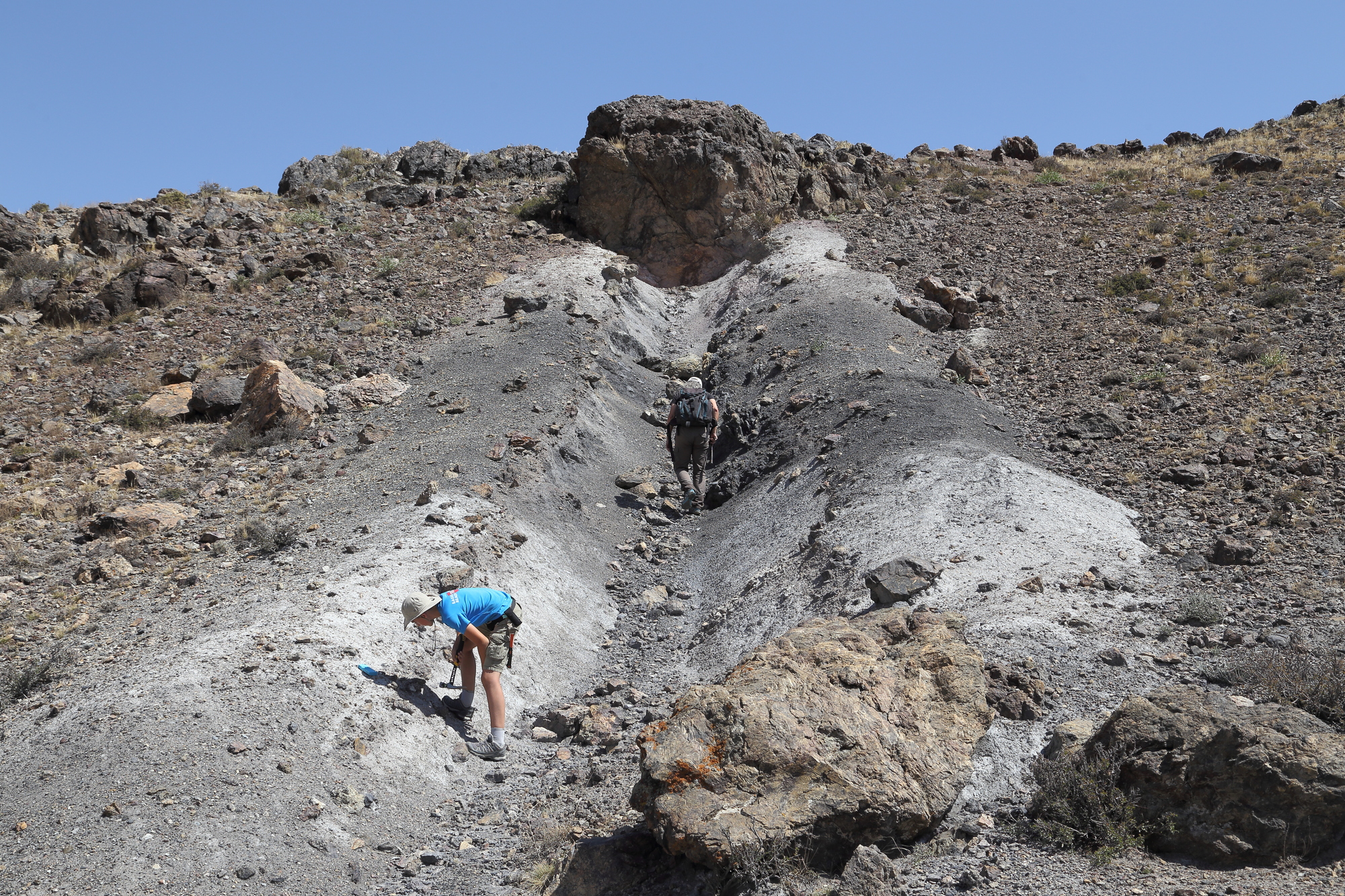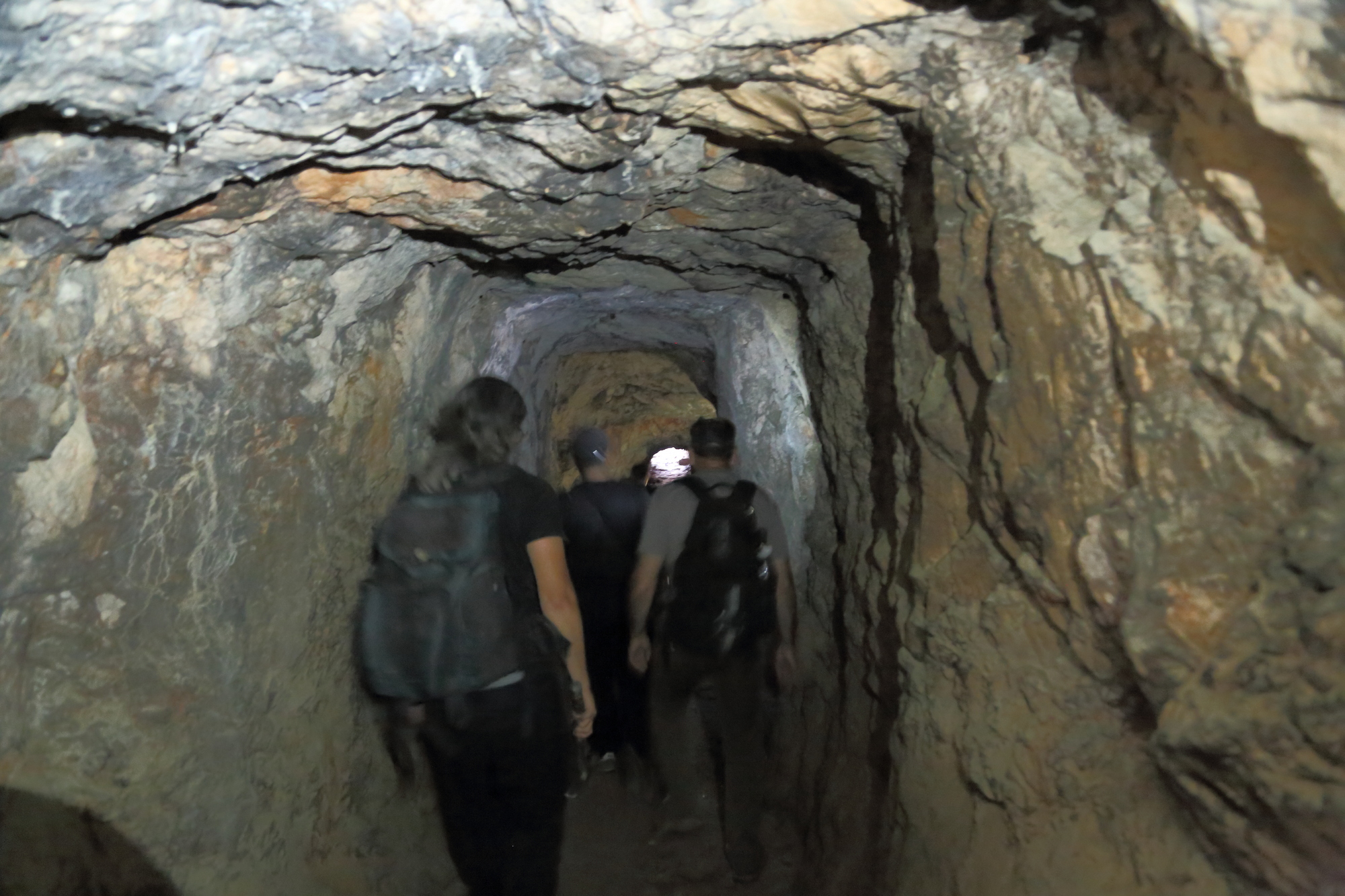International Summer School on Geology, Geoheritage and Climatology, August 15 – August 27, 2024 “Millions of Years before the Silk Road”
Summer school concept
In 2024, we decided to move away from the traditional summer school, which is traditionally held only in the Madygen Geopark. We decided to diversify thematic areas and expand the areas of knowledge, from the northern to the southern Tien Shan.
As a result of a long geological history, the southern, middle and northern regions of the Tien Shan are distinguished by their geological and tectonic structure, as well as geographical conditions. Such an extensive geography of the summer school will allow us to study various geoscientific topics, which will introduce a certain trend in the knowledge about geodiversity and the skills of studying it during the summer school.
According to geological zoning, the northern part of the Tien Shan mountain system is composed of the Caledonides, the middle part is distinguished by the Caledonian-Hercynian structure, the southern part is the Hercynids. This geological structure led to a very diverse geological heritage of the Tien Shan, as well as to a variety of geological processes.
Therefore, during the trip, the summer school participants will see how very different the geological landscapes of the northern and southern Tien Shan are. Landforms and exogenous geological processes depend on geology and tectonics. Therefore, during the summer school we will see which geological processes occur in the Caledonides zone and which in the Hercynides zone.
In this regard, summer school participants will have a great opportunity to learn about the geodiversity of this unique mountain system – the Tien Shan.
Additionally, during the trip, participants will be able to get acquainted with the culture of Kyrgyzstan, which is still filled with the ethnography of nomads.
In the summer school program
In 2024, the summer school program is structured in such a way as to get acquainted not only with the geography of the Tien Shan and Kyrgyzstan, but also with the geological heritage of the southern and northern parts of this mountain system. The summer school program includes various objects of geological heritage, glaciers, waterfalls, lakes, canyons, reference geological sections (stratotypes), weathering forms, landscapes, landslides, paleontological layers, a unique karst cave, geo-cultural objects, an ancient cave mine, mineralogy, rare springs and others. Also on the program is a city-museum – the era of the Soviet Union, a kind of geocultural open-air museum of history.
Purpose of the course
The interdisciplinary summer school offers a new and integrated approach to understanding past, present and future geoheritage through the lenses of structural geology, historical geology, geography and climatology.
The integrated development of geological and environmental skills and tools is very interesting when used together, as they can provide information about the origin and formation of geological heritage sites and their physical properties, as well as estimate the timing of processes.
In general, the Geological Sciences Field Summer School will introduce methods of field geology and geological research in a number of disciplines. Field studies will enable you to develop basic field research skills.
Specific topics of the Summer School will change in each individual region of Kyrgyzstan along the route. But they will be considered in conjunction with other thematic areas to provide the opportunity to participate in more than one Summer School and understand the interdisciplinary approach to the study of geoheritage.
Target group
Master’s students, postgraduates, PhDs and early career researchers in geology, environmental science or similar geoscientific fields, professionals in relevant fields and people seeking to gain knowledge of geological disciplines.
Organizers of the summer school:
– Tien Shan Geological Society (Kyrgyzstan)
– Kyrgyz Mining and Metallurgical Institute
Summer school dates: August 15 – August 27, 2024. Places are limited to 20 participants
The teachers of the Summer School are famous scientists from Kyrgyzstan and Kazakhstan
Venue: Tien Shan, Kyrgyzstan, Central Asia
Commission information: $700. The fee for high school students is $500.
All services: logistics, accommodation, meals, teachers, etc.
Phone\whatsapp for inquiries: +996 553991663, e-mail: info@geotianshan.org
Program
Day 1. (15.08.). Arrival in Bishkek
Meeting at the airport. Hotel accommodation. Briefing.
Day 2. (16.08.). Bishkek – Ala-Archa National Park
Excursion to the national natural park. The park is located 45 km from the city of Bishkek. Acquaintance with the Caledonides of the northern Tien Shan. Mountainous terrain of the advanced mountain range in the Tien Shan system. Northern border of the Tien Shan mountain system.
Tourists arriving in Bishkek, paying attention to the Kyrgyz ridge, located south of the capital, think that these mountains are of volcanic origin. However, after visiting the Ala-Archa National Park, they understand that the Tien Shan mountains are of tectonic origin and have nothing in common with volcanoes.
Day 3. (17.08.). Bishkek – Kaji-Sai (Issyk-Kul)
Trip to Lake Issyk-Kul (warm lake). Along the way, visit the Kok-Moinok canyons. Study of erosion as a result of tectonic activity of the Tien Shan Mountains. The origin of the unique Lake Issyk-Kul. Flooded Chinese city of Chigu. The origin of the aesthetic Meso-Cenozoic landscapes of the southern coast.
Day 4. (18.08.). Kaji-Sai – Arabel high mountain valley (4000 m)
Excursion to the Barskoon gorge, where waterfalls and the classic mountain landscape of the northern Tien Shan are located. We will ascend to the Arabel Valley, a representative of the latest geological structure. Arabel is a peneplain at an altitude of over 4000 m. Accommodation in a field camp.
Day 5. (19.08.). Exploring the geodiversity of the Arabel Valley
Arabel is the newest geological structure. Here are located the representative glacier Suek, glacial lakes, Arabel syrts as a high-mountain landscape, and glacial moraines. On this day, participants will take an excursion to the Suek glacier, where glaciological observations have been carried out for more than 60 years. Return to Kaji-Sai.
Day 6. (20.08.). Kaji-Sai – Kazarman
Participants will see the diversity and difference of the magnificent landscapes of the northern and middle Tien Shan. Study of structural geology. Weathering and erosion processes in the Jumgal River valley. Various landforms. Badlands.
Day 7. (21.08.). Kazarman – Osh
We will climb the pass of the Fergana ridge (3000 m) and descend into the valley of the same name. Participants will see how geology and landscapes change in one day’s journey. There are magnificent panoramas along the way. From the northern and middle Tien Shan we get to the southern Tien Shan and see how the objects of geodiversity change and are very different from the objects of geodiversity of the northern part of the Tien Shan. Arrival in Osh – an ancient city on the Great Silk Road. Hotel accommodation.
Day 8. (22.08.). Osh – Pamir
A trip to the Alai Valley along the Pamir Highway. The Alai Valley is a tectonic boundary between two mountain systems, the Pamirs and the Tien Shan. The Pamir Highway is not just a road, it is an open-air museum of landscapes and geoheritage objects. Along the way, study landforms. Excursion to Tulpar-Kul lakes. The lakes are of glacial origin. Accommodation in a yurt camp in the Achik-Tash valley under Lenin Peak (7134 m).
Day 9. (23.08.). Achik-Tash – Osh
Excursion to Onion Glade, study of glaciers and glacial moraines. Dinner. The return journey along the Pamir Highway is a completely different perspective on geoheritage objects. Study of river terraces. Study of the red-colored Mesozoic complex. Excursion to a huge landslide in the town of Gulcha.
Day 10. (24.08.). Osh – Madygen
A trip to the Madygen geopark. Along the way, an excursion to the Tuya-Muyun karst region and a visit to the Barite cave with various mineral combinations. Accommodation in a tent camp.
Day 11. (25.08.). Geological studies in Madygen
Visit and study of Meso-Cenozoic, Paleozoic geological sections. Study of geoheritage objects, geomorphology, structural geology, paleontology.
Day 12. (26.08.). Geological studies in Madygen
Trip to the Zhailoo-Uchu valley to study the Madygen Formation, Triassic.
Day 13. (27.08.). Madygen – Osh
Return to Osh. Hotel accommodation. Dinner at an ethno restaurant.
Comments: Continuation of the summer school in Madygen for participants who will continue research in the geopark until 31.08.2024. Summer research school in geology in the Madygen geopark
Day 14. (28.08.). Osh Airport

